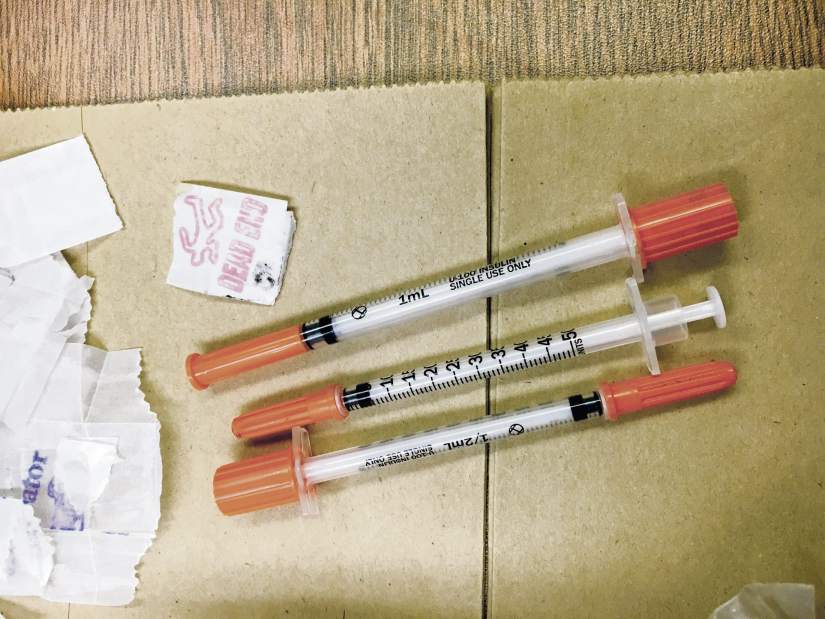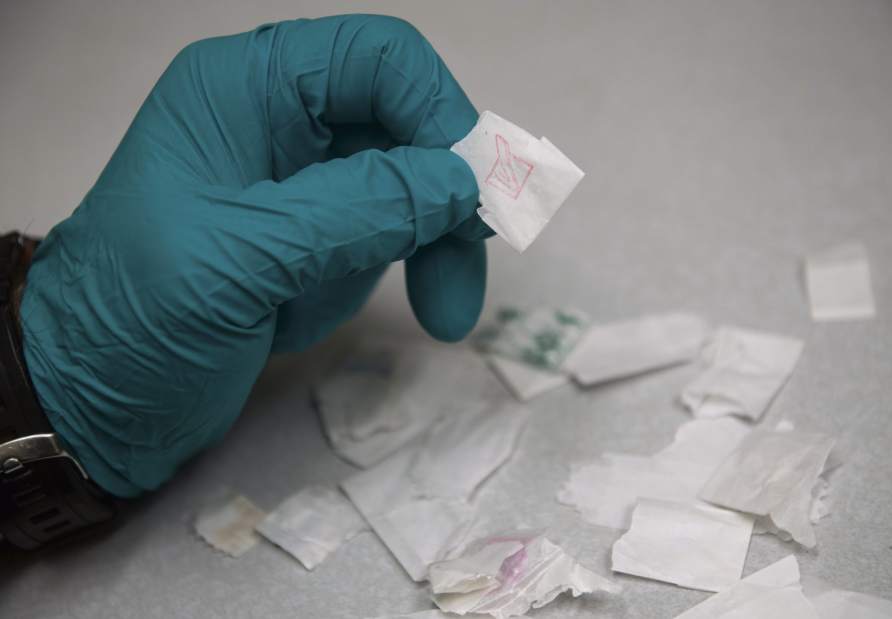Overdose deaths in Westmoreland hit new high in 2016
Recovered addict Kiera Spahn of Penn Township lost her husband, Jesse, to heroin in December.
She was shocked Wednesday morning by an email from Westmoreland County Coroner Ken Bacha: Jesse Spahn was one of 174 fatal overdoses. The number jumped 38 percent in 2016, setting a record.
"I had no idea it was that much. It's always been there since I was in high school, but it was just a few (deaths) here and there. Now it's definitely an epidemic, and it's really sad," said Spahn, 27.
Bacha reported Wednesday that the number of overdose deaths last year surpassed officials' dire prediction of about 168. The office recorded 126 deaths in 2015.
"After all the toxicology tests came back this week, it was even a little higher than we had anticipated. It's tragic, and if people don't think it's impacting them, they are wrong," Bacha said.
Every county in Southwestern Pennsylvania saw overdose deaths spike last year, according to records provided by coroners and medical examiners. Even with a number of suspected cases awaiting toxicology results, Allegheny County reported a 23 percent increase in fatal overdoses from 2015. Beaver County had a 190 percent jump; Washington County, 50 percent; and Fayette, 46 percent.
The projection for 2017 is even worse in Westmoreland, the coroner said.
Overdose deaths are on pace to surpass the 2016 number by almost 20 percent, he said, predicting the toll to reach 207. Tests have confirmed four overdoses this year, and another 48 await laboratory confirmation.
"It's frustrating and tragic. You talk about seeing the light at the end of the tunnel ... I don't mean to joke about this, but I literally don't even see the tunnel at this point, I'm sorry to say," Bacha said.
The year-end statistics show the drug epidemic impacted both genders — 126 were men, 48 were women — and every age group. Five victims were between ages 16 and 20; 39 ages 21-30; 48 ages 31-40; 33 ages 41-50; 42 ages 51-60; and seven ages 60-70.
Bacha had to seek supplemental budget appropriations last year to meet the spiraling costs of the overdose epidemic.
"Drug overdoses after autopsies, coroner man hours, transporting ... you're talking about $3,000 per case in our office," he said. "That cost in 2016 to our county's taxpayers was $522,000, and that doesn't even include the man hours for ambulance, police, jail and the district attorney's office."
Bacha said the numbers confirmed the forecasts of state and local drug experts including Tim Phillips, director of the Westmoreland County Drug Overdose Task Force, who had warned the epidemic would worsen in 2016.
Phillips said many would turn to heroin when the state last summer implemented a prescription drug registry program aimed at ending "doctor shopping" for people who abuse pain medications.
"The experts had warned us that in every other location where the registry program has been implemented, there was an increase in the number of people who may no longer be able to get prescription pills and who would go to street drugs," Bacha said. "Unfortunately, I believe these numbers show those predictions came true."
Spahn said her husband had moved to North Carolina to break his addiction and was back to celebrate Christmas and a loved one's birthday. Jesse Spahn died of an overdose at a relative's home in Latrobe. He was 29.
"He was doing amazing. ... He had gotten a good job, got his driver's license back, even got a car .... but came back (to Westmoreland County) only three days to visit," Spahn said.
"When the police came to my door ... it was devastating," she said. "We're losing too many people from all walks of life, and it's a shame.
"I've relapsed before, but it's been three years now and it's always a struggle. You think you can get high just once, but with the stuff they put in there now, you never know what you're getting," she said.
Spahn believes public education, treatment programs and providing naloxone to first responders, schools and others are bright spots in the addiction battle. Naloxone reverses the effects of an opioid overdose.
"Those groups like Sage's Army are fantastic. It's a good thing to let people know what's going on and move people into action," she said. "Ignorance only makes things worse."
Sage's Army is a nonprofit drug awareness/prevention organization created in honor of Sage Capozzi, a 20-year-old from Irwin who lost his life in 2012 to addiction.
Bacha said that when he became coroner in 2002, the office investigated 22 overdose deaths. The 2017 total marks a 691 percent increase.
"It's hard to believe," he said.
Paul Peirce is a Tribune-Review staff writer. Reach him at 724-850-2860 or ppeirce@tribweb.com.


